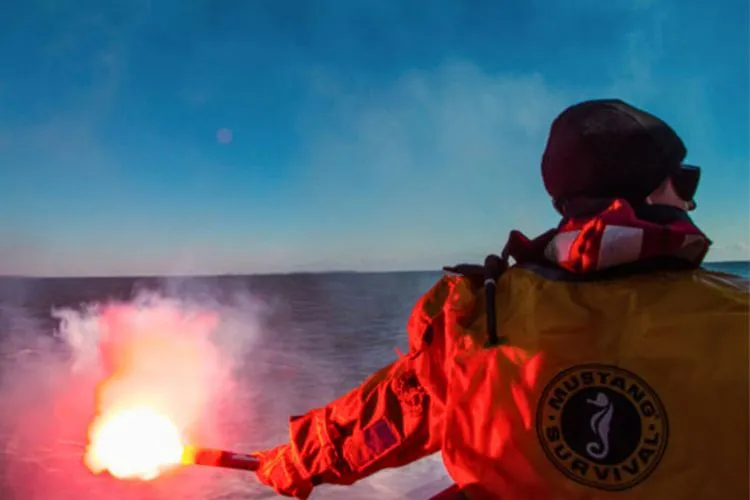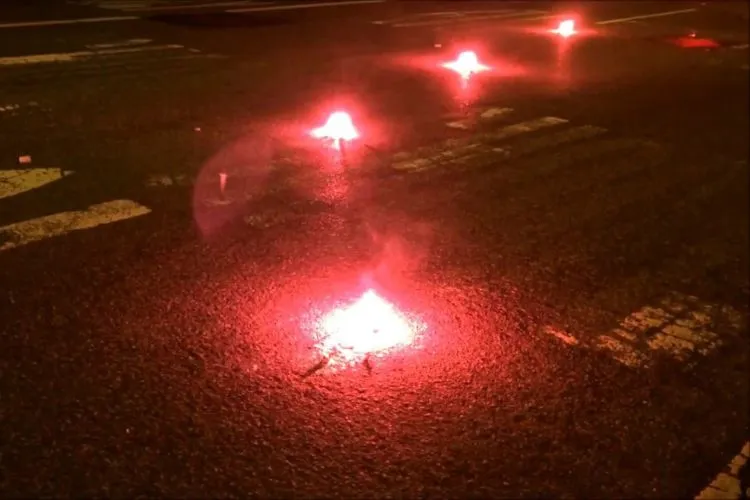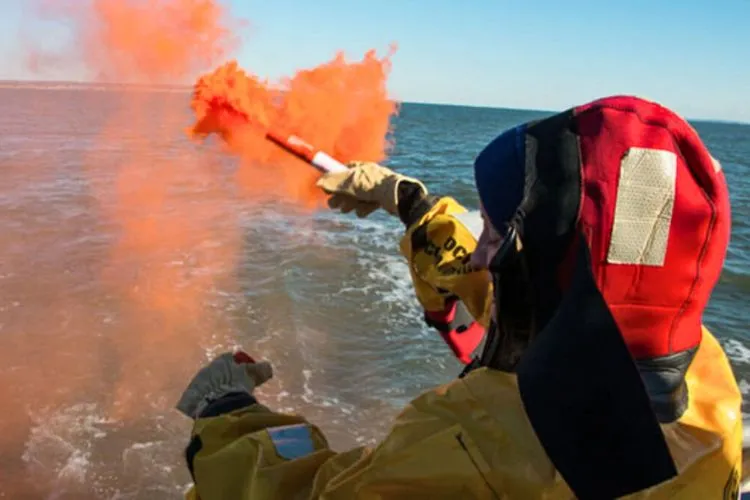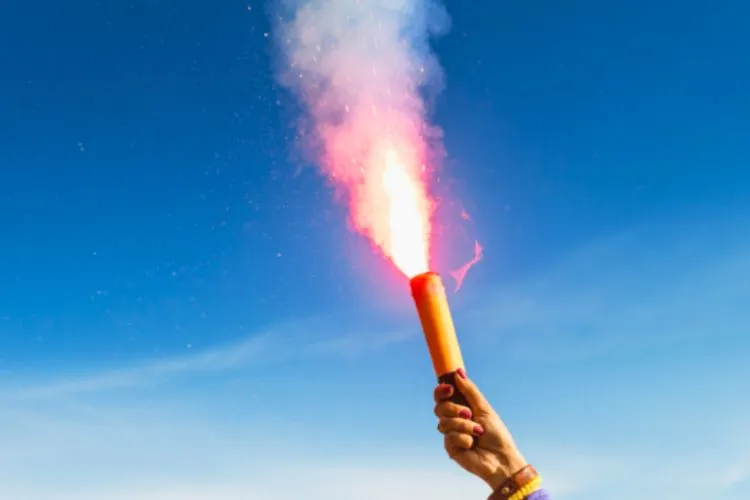When faced with an emergency, particularly on the road or at sea, flares are a go-to signaling device. They capture the attention of passersby and rescuers, alerting them to a crisis.
However, the efficiency of flares during adverse weather conditions, such as rain, may be a concern for those who may rely on them.
So, do flares work in the rain?
In this article, we will delve into the functionality of flares when it rains and cover the key considerations to ensure their optimal use.

What are Flares?
Flares are pyrotechnic devices that produce intense heat and light through an exothermic chemical reaction. They come in various types, all serving the purpose of attracting attention during emergencies.
Road flares, with their bright red or orange glow, are often used to signal caution on the roads during accidents or breakdowns. Marine flares, on the other hand, are designed for distress signaling over water.
Aerial flares are used to send distress signals visible from the air. They are tools of critical importance and are universally recognized signals of distress and need.
How Flares Work?
The basic working principle of a flare is a chemical reaction that involves oxidizers and fuels. These reactants, along with binders and coloring agents, are mixed and pressed into the body of the flare.
When ignited, the flare burns with a bright, sustained flame. This is due to the design and chemical composition, which ensure that the flare is resistant to its surroundings, including wet conditions.
Do Flares Work in the Rain?
Road Flares in Rain
Road flares are designed with utility and durability in mind. They have a waxy exterior that helps keep the inner chemicals dry. Even in heavy rain, a quality road flare will continue to burn.

Nonetheless, users should be mindful of safety. The flame of a road flare can be less visible in pouring rain and obscured by the reflections on wet surfaces.
Marine Flares in Rain
What about marine flares used in the unforgiving environment of the open sea? Marine flares have a robust construction that keeps them functional in wet conditions.

They are waterproof to an extent, ensuring they operate as intended even when water crashes over them. The primary objective of marine flares is to stay lit and visible despite the weather.
Challenges Posed by Rain
Rain might affect how long or how bright a flare burns. Heavy rain, in particular, can both lessen the intensity of a flare’s light and shorten its burn time.
Flares’ visibility issues in the rain are also significant. To maintain safety and effectiveness, it is essential to deploy flares properly in wet conditions.
Testing and Safety Standards
Flare manufacturers must adhere to strict safety and performance standards. Regulations often outlined by agencies such as the U.S. Coast Guard detail rigorous testing.
Flares must burn with a specific brightness and for a set duration, even in wet conditions. These standards ensure that, regardless of rain, flares are a reliable form of emergency signaling.
Best Practices for Using Flares in the Rain
When using a flare in the rain, certain best practices can enhance its efficacy. Firstly, the flare should be lit while shielded from direct rain impact, then positioned where it can be most visible while also being protected from the rain as much as possible.
Safety should always be paramount. Users must handle flares carefully and avoid direct contact with the flame.
Maintenance and Storage
To ensure flares perform optimally, even in the rain, proper maintenance is crucial. Flares should be stored in a dry, cool place.
They must be regularly checked for any signs of damage and within their expiration dates. Doing so greatly improves the chances that a flare will function as expected, no matter the weather.
Legal and Safety Regulations for Flare Usage
Legal and safety regulations for flare usage vary widely across jurisdictions, making it crucial for individuals and organizations to familiarize themselves with the relevant laws in their area.
For instance, in maritime contexts, the International Maritime Organization (IMO) and local maritime authorities often dictate the types, quantities, and storage methods of flares required on board vessels.

Similarly, on roads, transportation departments may have specific rules regarding the use of flares during accidents or vehicle breakdowns. These regulations are designed to ensure safety and effectiveness in emergency situations, preventing misuse that could lead to accidents, fires, or pollution.
Additionally, some regions may restrict the sale and transportation of flares, classifying them as hazardous materials.
Compliance with these regulations is essential not only for legal adherence but also for maximizing the potential of flares to save lives and signal for help in emergencies.
Case Studies: Flares in Action
In a maritime rescue, the use of flares led to the successful location and retrieval of a stranded vessel after its lights were spotted by a passing ship, despite rough sea conditions.
Frequently Asked Questions (FAQs)
Can you use road flares in the snow as well as the rain?
Yes, road flares can be used in both conditions. However, extra caution should be taken to ensure they remain visible.
How long will a flare continue to burn in heavy rain?
This depends on the flare’s quality and design, but a standard road flare should burn for at least 15 minutes.
What should you do if a flare fails to ignite in the rain?
If a flare fails, move to a dry area if possible and try to relight it or use an alternative signaling method.
Are there waterproof or rain-specific flares available on the market?
Most marine flares are waterproof, and many road flares have a degree of water resistance.
How do water-resistant flares differ from regular flares?
Water-resistant flares have protective coatings and are designed to burn even when exposed to water.
Conclusion:
In summary, flares are designed to be robust and reliable, even when conditions are far from ideal. Rain, while it poses challenges, does not render flares ineffective.
As tools of safety and signals of distress, the primary imperative is that they work when needed. As outlined, understanding their operation, adhering to best practices, and maintaining them can ensure they do just that.


